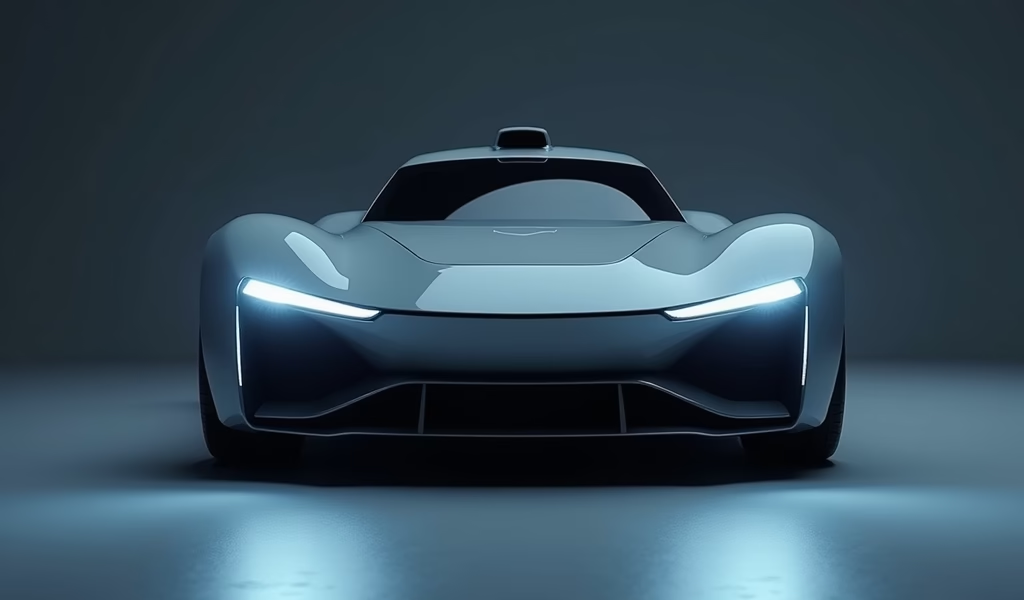Overview
This article explains fog lamp override functions in vehicles, covering their proper usage during limited visibility conditions, maintenance requirements, legal considerations, and potential upgrade options. It emphasizes that fog lamps should be used as a supplement to headlights in specific weather conditions like fog or heavy precipitation, not as a style accessory or alternative to regular headlights.
Table of Contents
- Understanding Fog Lamp Override: What Is It?
- When to Use Your Fog Lamp Override Function
- Locating and Operating Fog Lamp Controls in Your Vehicle
- Common Issues with Fog Lamp Override Systems
- Maintenance Tips to Keep Fog Lamps Working Properly
- Legal Considerations for Fog Lamp Usage
- Upgrading Your Fog Lamp System: Is It Worth It?
- Conclusion
- Frequently Asked Questions
Understanding Fog Lamp Override: What Is It?
The fog lamp override function is one of those vehicle features that many drivers overlook until they really need it. As a mechanic who’s worked on countless vehicles over 20 years, I’ve seen too many drivers caught in dangerous situations simply because they didn’t understand this simple but crucial function.
In its most basic form, a fog lamp override allows you to manually control your vehicle’s fog lights regardless of your current headlight settings. This override gives you the power to illuminate the road differently when standard headlights just aren’t cutting it in challenging visibility conditions.
Modern vehicles often come with automatic lighting systems that decide when to activate various lights. While convenient for everyday driving, these automated systems don’t always make the right call in unusual weather conditions. That’s where the override function becomes your best friend.
Think of fog lamp override as your “I know better than the computer” button. When fog, heavy rain, or snow creates that dangerous combination of poor visibility and reflected light, being able to manually control your fog lamps can make all the difference between a safe journey and a white-knuckle drive.
When to Use Your Fog Lamp Override Function
Knowing exactly when to engage your fog lamp override is half the battle. I’ve seen plenty of drivers using fog lamps inappropriately, which not only defeats their purpose but can create hazards for others on the road.
Use your fog lamp override function when:
- Driving in genuine fog, mist, or heavy precipitation
- Visibility drops below 100 meters (approximately 328 feet)
- Regular headlights create glare by reflecting off water particles
- Driving in dusty conditions where low-mounted lighting helps
Contrary to popular belief, fog lamps aren’t meant to be used as supplementary lighting on clear nights or as a style statement. Their specific design—positioned low on the vehicle and angled toward the road—makes them ideal for certain conditions but potentially blinding to others when used incorrectly.
Many drivers make the mistake of activating their fog lamps whenever it’s dark. But these specialized lights are engineered for specific visibility challenges, not general darkness. Using them inappropriately can cost you unnecessary repair expenses from premature bulb failure and potentially earn you a ticket in jurisdictions with strict lighting regulations.
When visibility improves, remember to deactivate your fog lamps. Leaving them on in clear conditions not only wastes energy but can distract other drivers, especially when roads are wet and reflective.

Locating and Operating Fog Lamp Controls in Your Vehicle
Finding your fog lamp controls shouldn’t feel like a scavenger hunt, but vehicle manufacturers don’t always put them in obvious places. Here’s where you’ll typically find them in most vehicles:
- On the turn signal stalk (common in European models)
- As a separate button or switch on the dashboard
- Integrated into the headlight control knob
- On a dedicated lighting control panel
The symbol for fog lamps usually looks like a light beam pointing downward with horizontal lines through it (representing the fog). Front fog lamps typically show a green indicator on your dashboard when activated, while rear fog lamps (more common in European vehicles) usually display an amber or yellow indicator.
The actual operation varies significantly between manufacturers. In most vehicles, you’ll need to have your headlights turned on before the fog lamp button becomes operational. This is a safety feature to prevent drivers from using fog lamps as their only light source.
For example, in Toyota vehicles, you typically must first turn on your headlights, then press the dedicated fog lamp button. In many Ford models, you’ll find a separate button that works independently once your headlights are on. BMW often requires you to pull the light switch outward after activating the headlights.
If you’re struggling to locate or operate your fog lamps, your owner’s manual is the best resource. Most manuals have a dedicated section for lighting controls that will walk you through the specific procedure for your model. Taking five minutes to learn this now could save you considerable stress when you actually need to use them in poor conditions.
Remember that the override function is designed to give you control when automatic systems might not respond correctly to unusual weather conditions. Learning how to quickly access and operate this feature is an essential skill for any driver who might encounter fog, heavy rain, or snow.
Common Issues with Fog Lamp Override Systems
After working on thousands of vehicles, I’ve noticed several recurring issues with fog lamp systems that drivers commonly face. Knowing these potential problems can help you diagnose issues before they leave you in a literal fog.
One of the most frequent problems I see is electrical in nature. Fog lamps often share circuits with other lighting systems, and when a fuse blows, drivers might not immediately notice their fog lamps are affected until they need them most. Regularly checking all your vehicle’s lights is part of essential car maintenance that too many drivers neglect.
Switch failures are another common culprit. The fog lamp switch often gets less use than other controls, which means it can become sticky or unresponsive over time. If your fog lamps don’t activate when you engage the switch, try toggling it several times. If that doesn’t work, you might need a switch replacement—typically a straightforward repair that won’t break the bank.
Wiring issues become more common as vehicles age. Fog lamps are mounted low on the vehicle, exposing their wiring to road debris, water, and salt. This vulnerable position makes them prone to connection problems. If your fog lamps work intermittently, wiring is the likely culprit.
I’ve also seen many cases where the override function itself malfunctions. Modern vehicles with complex lighting computers sometimes develop software glitches that prevent manual override from working correctly. In these cases, a dealership visit for a software update might be necessary.
Lastly, don’t overlook the simple issue of burned-out bulbs. Because fog lamps are used less frequently than regular headlights, drivers often don’t notice when they’ve burned out. Make checking your fog lamps part of your regular maintenance routine, especially before seasons when you’re likely to encounter fog or heavy precipitation.
If you’re experiencing issues with your fog lamp system, a professional diagnostic can save you time and frustration. Most reputable shops can quickly identify fog lamp problems using specialized testing equipment that pinpoints electrical issues without requiring extensive disassembly.
Maintenance Tips to Keep Fog Lamps Working Properly
Keeping your fog lamps in top working order doesn’t require specialized mechanical knowledge, just some regular attention. I’ve put together these maintenance tips based on what I’ve found works best for longevity and performance.
First, clean your fog lamp lenses regularly. Their low position makes them magnets for road grime, mud, and insect remains. Even a thin layer of dirt can significantly reduce light output. A simple wipe with a damp cloth during your regular car wash can maintain optimal brightness. For stubborn dirt, a mild soap solution works wonders without risking damage to the lens coating.
Check for moisture inside the housing whenever you clean the lenses. Condensation inside fog lamp assemblies is a warning sign that the seals are failing. If left unaddressed, this moisture can cause corrosion to electrical connections and reflectors, significantly reducing light output or causing complete failure. Most fog lamp assemblies can be resealed without full replacement if caught early.
Inspect the adjustment mechanisms periodically, especially after driving on rough roads. Properly aimed fog lamps should illuminate the road about 30 feet ahead without projecting upward into oncoming traffic’s line of sight. If your fog lamps seem to be illuminating too far ahead or too close to your vehicle, they likely need readjustment.
Replace bulbs in pairs, even if only one has failed. This ensures balanced illumination and saves you the trouble of replacing the second bulb shortly after the first. Most fog lamp bulbs are relatively inexpensive, and replacing them is usually a straightforward DIY job. Proper replacement procedures can extend bulb life and prevent connection issues.
Finally, test your fog lamp override function regularly, not just when you need it. Activate the system monthly, even in clear conditions (while stationary and away from traffic), to ensure the switches, connections, and bulbs are functioning correctly. This simple habit has saved many of my customers from discovering problems at the worst possible moment.

Legal Considerations for Fog Lamp Usage
The legal landscape surrounding fog lamp usage varies considerably across different regions, and staying informed can help you avoid unnecessary tickets. As someone who’s helped many customers navigate these regulations, I’ve found that understanding the basics goes a long way.
Most jurisdictions specify that fog lamps must be used alongside low-beam headlights, not as standalone lighting. The logic is sound—fog lamps are designed to supplement, not replace, your primary lighting system. Using fog lamps alone provides inadequate overall visibility and can confuse other drivers about your vehicle’s position and direction.
Color restrictions are another important legal consideration. In most areas, front fog lamps must emit white or selective yellow light, while rear fog lamps (if equipped) must be red. These color requirements help other drivers quickly determine which direction you’re traveling, especially in low-visibility conditions.
The Insurance Institute for Highway Safety notes that improper fog lamp usage contributes to a significant number of weather-related accidents each year. Many states have responded with specific regulations about when fog lamps can legally be used, with some limiting their use exclusively to conditions of reduced visibility.
Mounting height and aiming regulations also exist in most areas. Fog lamps typically must be mounted at least 12 inches above the road surface but below the height of your headlights. They should be aimed so that the top of the beam is at least 4 inches below the center of the lamp at 25 feet ahead. Improperly aimed fog lamps can result in tickets, even if they’re being used in appropriate conditions.
If you’re planning a road trip across state lines, it’s worth researching the specific fog lamp regulations in each jurisdiction you’ll be passing through. What’s perfectly legal in one state might earn you a citation in another, and ignorance of local regulations rarely gets you out of a ticket.
Upgrading Your Fog Lamp System: Is It Worth It?
After years of helping drivers navigate poor visibility conditions, I’ve developed some clear opinions about fog lamp upgrades. The short answer is: for many drivers, yes, upgrading can be worthwhile—but it depends on your specific needs and driving conditions.
Factory fog lamp systems vary tremendously in quality and effectiveness. Entry-level vehicles often come with basic halogen fog lamps that provide adequate but not exceptional performance. Higher-end vehicles typically feature more advanced systems using LED or HID technology that offer better illumination, longer life, and improved energy efficiency.
If you frequently drive in foggy regions like coastal areas, river valleys, or mountain passes, upgrading to a higher-performance fog lamp system can significantly enhance your visibility and safety. The improvement in road illumination can reduce eye strain and fatigue during extended drives in challenging conditions.
LED fog lamp upgrades offer several advantages over standard halogen systems:
- Brighter illumination with less power consumption
- Instant full brightness (no warm-up period)
- Significantly longer service life (often 25,000+ hours)
- More precise beam patterns for better road illumination
When considering upgrades, look for systems that maintain a proper beam pattern. Many inexpensive aftermarket options produce more light but distribute it poorly, potentially blinding oncoming traffic or failing to properly illuminate the road. Quality matters more than raw brightness when it comes to fog lamps.
For most drivers, a moderate upgrade in the $150-300 range offers the best balance of performance improvement and value. These mid-range systems typically feature quality LED bulbs or complete assemblies that significantly outperform stock halogen units without requiring extensive electrical modifications.
If you decide to upgrade, consider professional installation. While many kits advertise “plug and play” simplicity, proper aiming and electrical integration often require specialized knowledge and tools to ensure optimal performance and prevent electrical system issues. The additional cost of professional installation is usually worth the peace of mind and performance benefits.
Before making any upgrades, check your local regulations regarding aftermarket lighting modifications. Some jurisdictions have strict rules about replacing original equipment, particularly for lighting systems. A knowledgeable automotive technician can guide you through the options that comply with local requirements while meeting your performance needs.
Conclusion
Mastering your vehicle’s fog lamp override function might seem like a minor detail in the grand scheme of driving skills, but it’s one of those small things that makes a huge difference when conditions turn challenging. The ability to manually control these specialized lights gives you an edge when Mother Nature tries her best to reduce visibility.
Remember that fog lamps aren’t just fancy accessories—they’re purpose-built tools designed for specific conditions. Using them correctly not only improves your visibility but contributes to the safety of everyone sharing the road with you. The override function exists precisely because automated systems can’t always anticipate when these specialized lights will be needed.
Regular maintenance of your fog lamp system ensures it’ll perform when you need it most. Simple habits like cleaning lenses, checking for moisture, and periodically testing the override function can prevent unwelcome surprises during bad weather.
Whether you stick with your factory fog lamps or invest in upgrades, understanding when and how to use them properly is what truly matters. Even the most advanced lighting system is only as effective as the driver controlling it.
Stay safe out there, and remember—when the fog rolls in, the right lighting choice can make all the difference between tense white-knuckle driving and a confident journey through challenging conditions.
Frequently Asked Questions
What is the difference between fog lamps and driving lights?
Fog lamps are mounted low and angled downward to illuminate the road without reflecting off fog particles. Driving lights are designed for long-distance visibility in clear conditions and are typically mounted higher alongside headlights.
Can I use fog lamps instead of headlights?
No, fog lamps are designed to supplement headlights, not replace them. Most jurisdictions require headlights to be on when using fog lamps.
Why do my fog lamps turn off when I use high beams?
This is an intentional safety feature in most vehicles. High beams and fog lamps serve opposite purposes, as high beams reflect badly off fog particles.
Are yellow fog lamps better than white ones?
Selective yellow light can penetrate fog slightly better than white light because it has a longer wavelength. However, the difference is minimal compared to proper positioning and aiming.
How often should fog lamp bulbs be replaced?
Replace halogen fog lamp bulbs every 500-1000 hours of use or if you notice dimming. LED fog lamps typically last 25,000+ hours and rarely need replacement.

